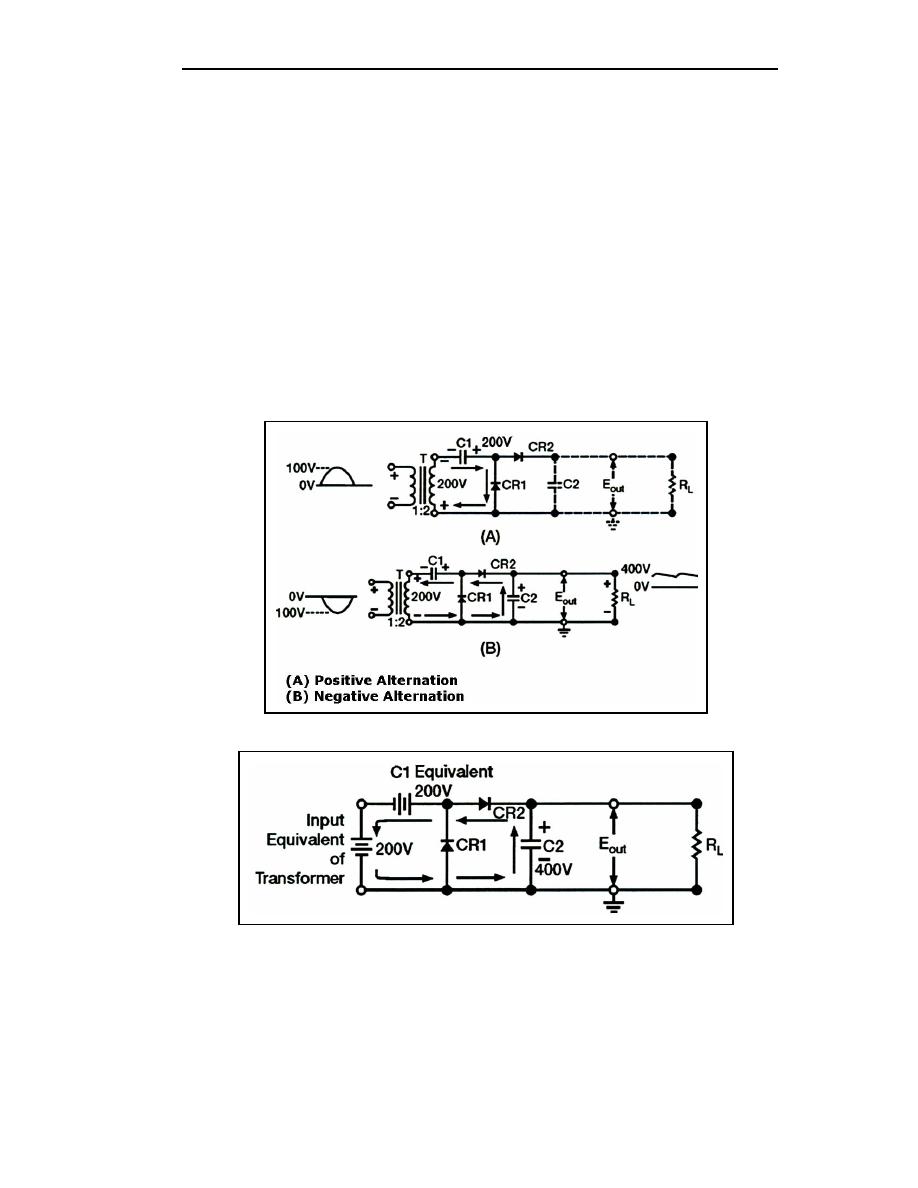
TC 9-62
the positive alternation of the input cycle (Figure 4-45, view A), the polarity across the
secondary winding of the transformer is as shown. Notice that the top of the secondary is
negative. At this time, CR1 is forward biased (cathode negative in respect to the anode).
This forward bias causes CR1 to function like a closed switch and allows current to follow
the path indicated by the arrows. Also at this time, C1 charges to the peak value of the
input voltage, or 200 volts, with the polarity shown.
4-126. During the period when the input cycle is negative (Figure 4-45, view (B)), the
polarity across the secondary of the transformer is reversed. Notice specifically that the top
of the secondary winding is now positive. This condition now forward biases CR2 and
reverse biases CR1. A series circuit now exists consisting of C1, CR2, C2, and the
secondary of the transformer. The arrows indicate the current flow. The secondary voltage
of the transformer now aids the voltage on C1. This results in a pulsating DC voltage of
400 volts, as shown by the waveform. The effect of series aiding is almost the same as the
connection of two 200-volt batteries in series. Figure 4-46 shows the C2 charges to the sum
of these voltages, or 400 volts.
Figure 4-45. Rectifier Action of CR1 and CR2
Figure 4-46. Series-aiding Sources
4-127. Figure 4-47 shows the schematic of a half-wave voltage tripler. When comparing
Figures 4-46 and 4-47, you should see that the circuitry is identical except for the
additional parts, components, and circuitry shown by the dotted lines (CR3, C3, and R2
make up the additional circuitry). By themselves, CR3, C3, and R2 make up a half-wave
4-40
TC 9-62
23 June 2005



 Previous Page
Previous Page
